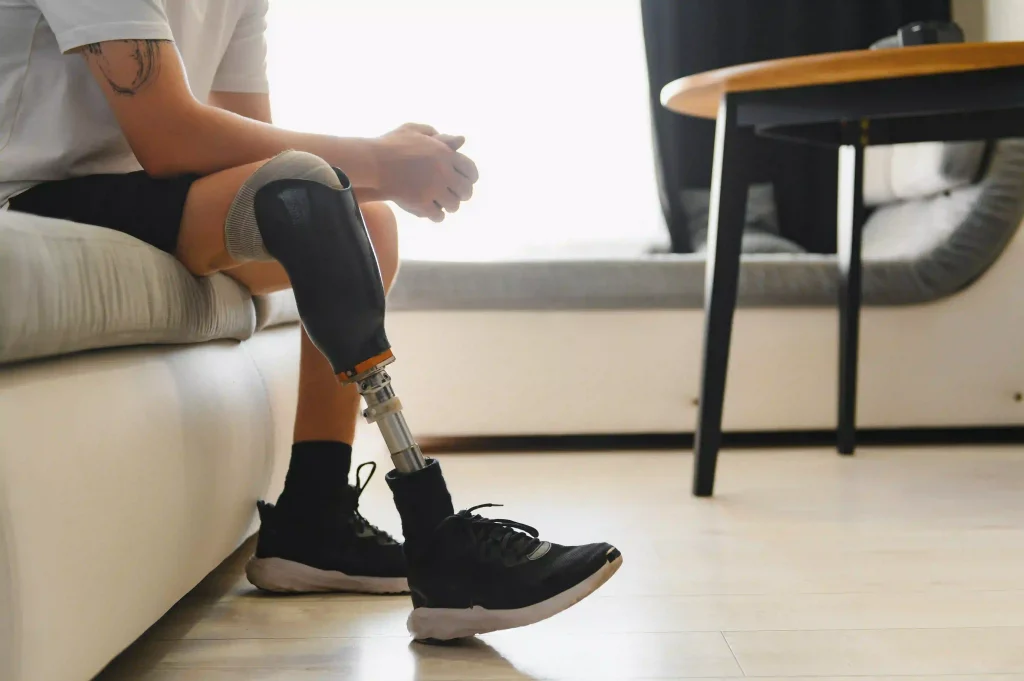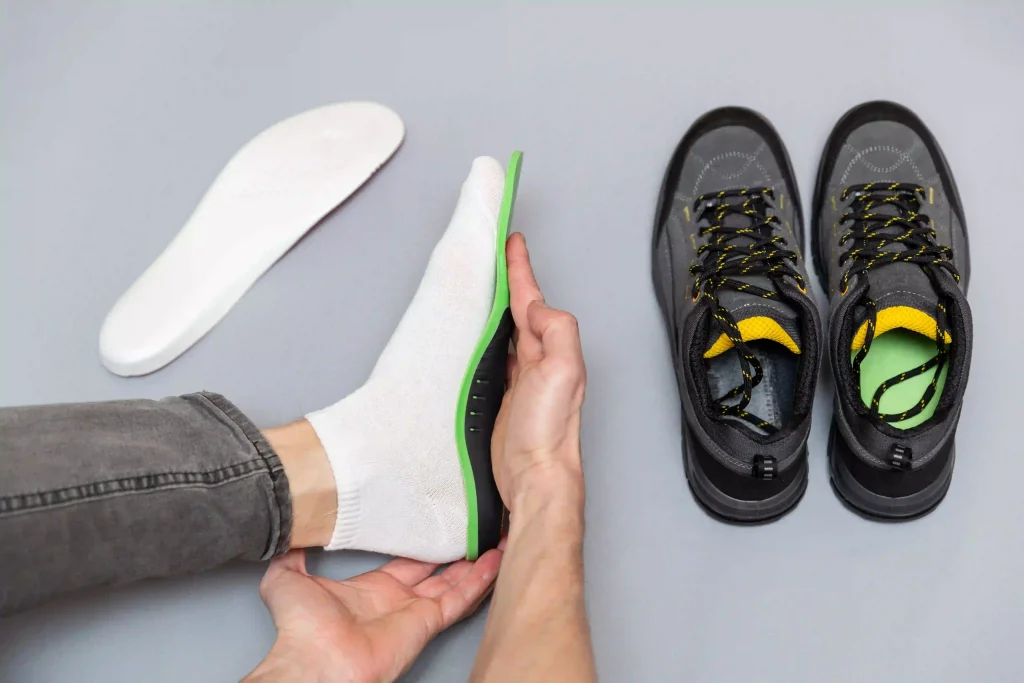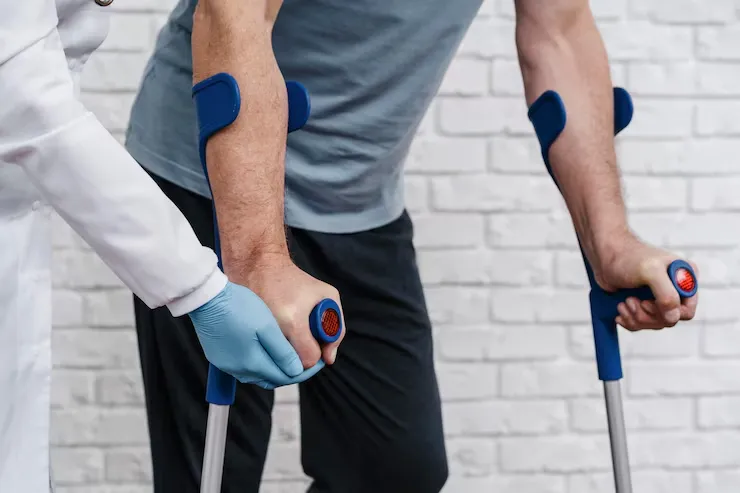
You must have faced the terms orthotics and prosthetics, which are often interchanged with one another. But have you ever considered what truly sets them apart? While both are engineered to help individuals overcome physical challenges, they play different roles: one enables you to make the most of what you have. At the same time, the other provides a replacement for what’s missing.
Come along, unravel the secrets behind each, and discover how these innovations truly empower people. Let us explore the blog to learn the impact each has on transforming lives.
What is a Prosthesis?
It is a human-designed device that replaces and functions in place of a missing body part. It is an option to mimic a lost limb or copy it as closely as possible. The prostheses’ primary purpose is to restore lost function and appearance due to amputation, congenital conditions, or injury. Artificial limbs or prostheses are of various types:
Prosthetics 101: Types and Uses
- Hand Prostheses include functional hands that can catch and manipulate objects and advanced cosmetic hands designed for appearance.
- Leg Prosthesis: You include running blades and prosthetic legs. These empower individuals to walk and stand, which is essential for mobility.
- Cosmetic prosthesis: Cosmetic prosthesis devices blend with the body when focusing on appearance.
- Other: Prosthesis can change the features of the eyes, ears, nose, and facial structures to restore form and functionality. Prostheses enable individuals to run, hold objects, perform daily self-care, and participate in life.
What is an Orthosis?

Unlike an artificial body part, an orthosis is an externally fitted device on an existing body part. It does not replace but modifies the structural and functional capacity of the neuromuscular and skeletal system. An orthosis supports and keeps correct alignment steady, helps prevent deformity, and improves function. Primarily, an orthosis focuses on supporting an existing part of the body, while a prosthesis is applied to replace a missing limb.
Types and Uses Of Orthotics
- Foot orthotics include custom-made inserts for shoes, Flat Foot, Plantar Fascitis and arch pain.
- Ankle-foot orthoses (AFO) support the lower extremities from the calf to the foot. AFOS help individuals who cannot lift their legs or have ankle instability. Knee braces are essential to offer post-surgery support and help manage osteoarthritis or ligament injuries. Thus, they provide stability and reduce pain.
- Spinal braces align spinal curvature and spine deformity.
- Upper body orthoses: These orthotics help correct carpal tunnel syndrome, arthritis-related hand sprains, and tennis elbow. They include wrist and elbow embraces.
Differences Between Orthosis and Prosthesis
- Purpose:
- A Prosthesis is used to take the place of an amputated body part.
- Orthosis supports, stabilises, corrects, or improves the function of an existing body part.
- Application:
- A prosthesis replaces a missing limb or body part.
- Orthosis is applied to an existing limb or body part.
- Goal:
- Prosthesis restores lost function and appearance.
- Orthosis improves the limb functionality, prevents deformity, reduces pain, and improves healing.
Similarities Between Orthosis and Prosthesis
Orthotics and prosthetics play essential roles in many functional areas/ They boost mobility, reduce pain, and improve well-being. To ensure the devices work correctly, individuals need custom fitting and considerable rehabilitation.
Orthotist vs. Prosthetist
- Orthotist: An orthotist examines, assesses, creates, fits, and oversees. They understand the conditions affecting muscles, bones, and nerves. The study and assessment helps orthotists select the right orthotic solutions and ensure they work well with the patient’s body.
- Prosthetist: A prosthetist specialises in helping people who have lost limbs. They can evaluate, design, make, fit and manage prostheses.
- Shared Skills: While their expertise varies, orthotists and prosthetists share a fundamental knowledge base. Both require intense knowledge of anatomy, how the body moves, material science (most suitable for various devices), and, most importantly, patient care and communication. Their work demands commitment to improving devices and their uses and sympathy for life.
They use the same biomechanical principles, whether making knee braces or prosthetic knees.
Conclusion
Orthotics and prosthetics play incredible roles, often complementing each other and restoring and enhancing human ability to perform physical functions. Therefore, when selecting orthoses or prosthetic devices, you should collect information to make correct decisions based on your unique needs, financial aspects, and potential providers’ reputations.
A well-chosen device is an investment in your freedom and welfare. Orthotics and prosthetics are not just instruments that enable a child to walk for the first time or help to achieve experienced freedom; They are the key to unlocking the person’s ability and changing futures.

If you want to know more about the best orthotics and prosthetic devices, Kare Prosthetics & Orthotics makes its expertise easily accessible. KARE offers remote assessment, fitting consultations, and direct delivery services to residents across India.
“Contact KARE Prosthetics & Orthotics in Bangalore today to schedule your appointment at the nearest clinic location!”
Frequently Asked Questions
Orthotics are accessories that help correct the alignment of the body part, relieve pain, and provide additional help, while prosthetics replace an amputated limb. Both help promote movement, but they work for unique needs.
Yes. Patients can often use an artificial leg and a shoe insert for orthotic shoes simultaneously for proper balance or comfort.
Yes. Orthotics relieve pain in existing body parts, enhance mobility, and prevent problems. Prosthetics replace lost limbs and improve mobility and confidence.
Orthotics are available as custom-made options as well as ready-made options. However, prosthetics are usually customised, as prosthetics should fit a person’s body accurately and work well.
They are artificial body parts that can replace a limb or a damaged part. Individuals consider using an artificial body part after a severe injury, illness, or disability since birth.



